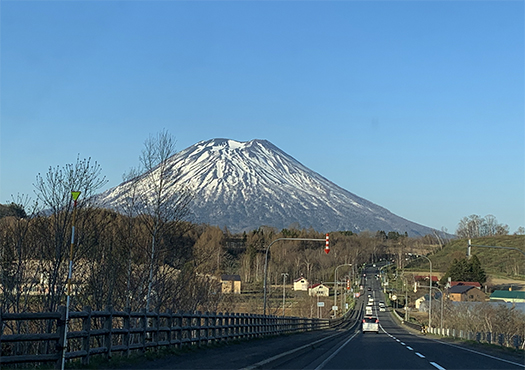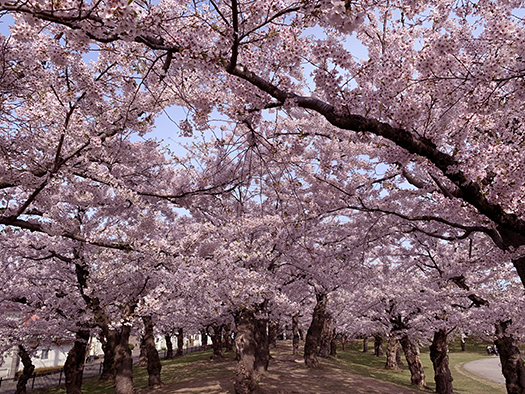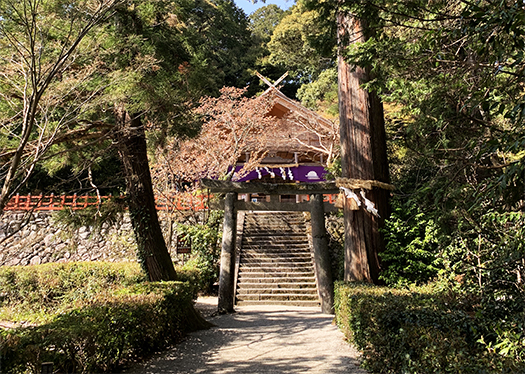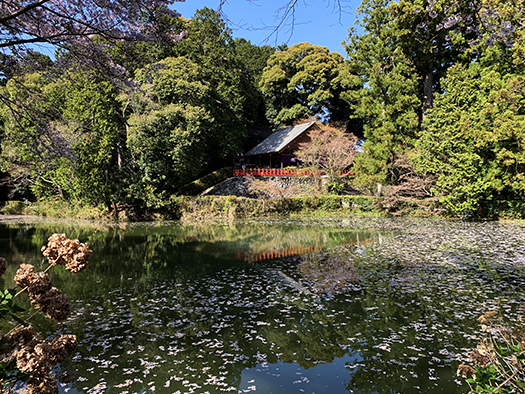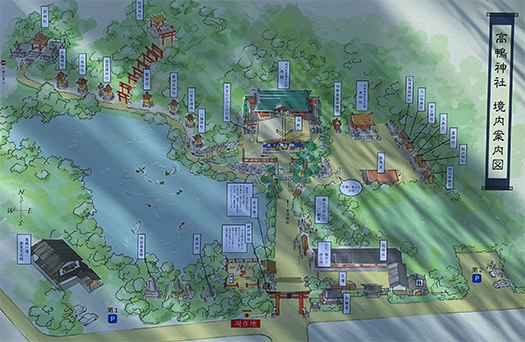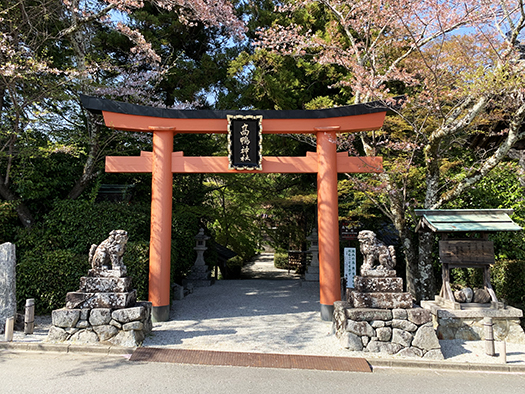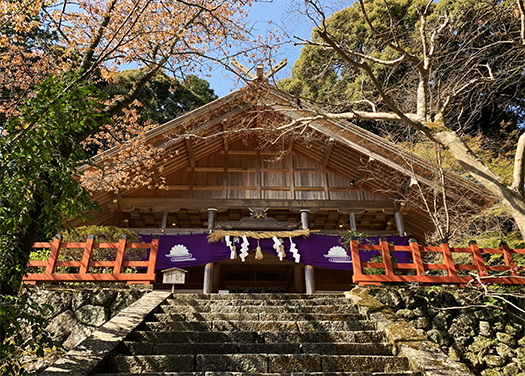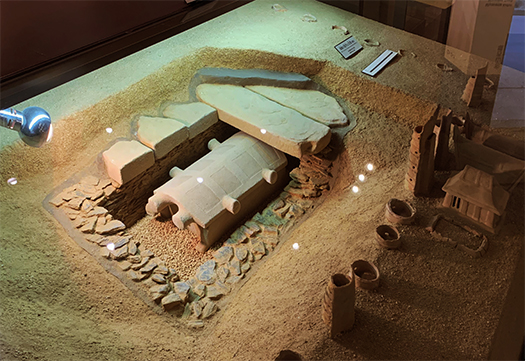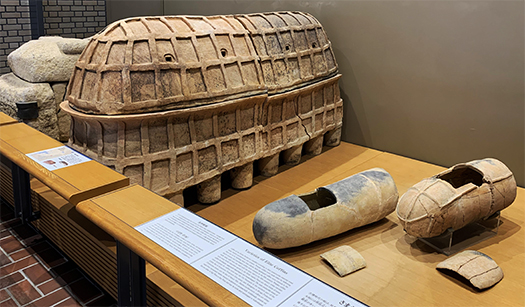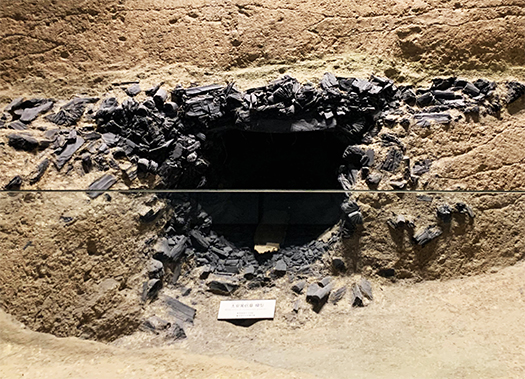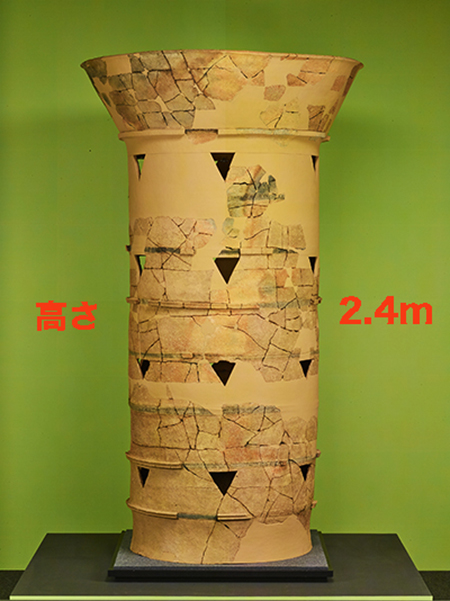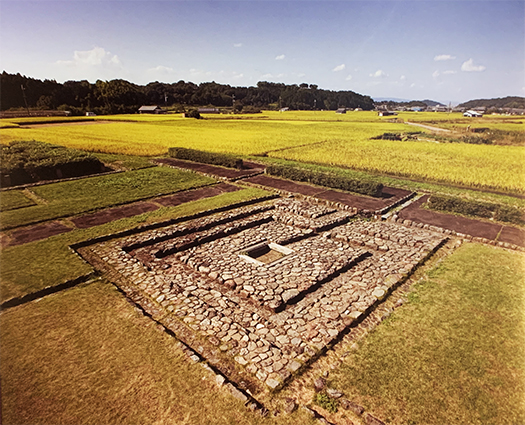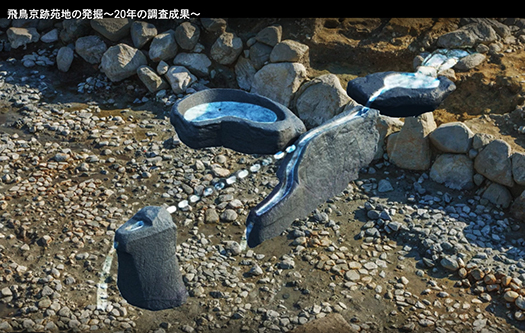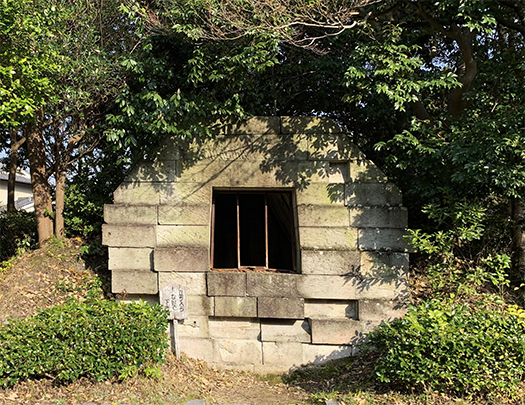

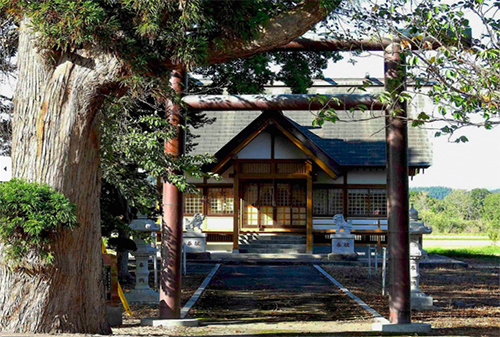
このブログでは基本的にシリーズ構成で現在は「奈良・飛鳥」探訪中。
全15回まで飛鳥とその周辺・奈良県内を探訪中。
15回では御所市の「高鴨神社」のことに触れさせていただいた。
で、わたし自身は道南のサクラ&遺跡史跡探訪していて
カミさんがその趣味生活のサポートで
「あのさ、北海道最古の神社っていうのがあったよ」
という耳寄りな情報を探し当ててくれた。ツボであります(笑)。
その名は「雷公神社」という一風変わった名前のお社であります。
道南は函館から松前に抜ける知内町にある、ということで立ち寄り探訪。
型どおり参拝させていただいた後、碑文などを確認したところ以下記述。
〜同社に伝わる知内町最古の古文書「大野土佐日記」によれば、
1205年、砂金を求めて甲斐国からこの地に来た荒木大学が1244年、
「大野家の始祖了徳院」に命じて賀茂の上下社を創建したときに始まる伝承。
北海道最古の神社である。古くは上雷(このあたりの地名)にあったが、
大正4年、現在地に遷座した。〜とされていた。<3番目写真は旧社の様子>
おお、二重にツボ。
ちょうどこのブログ連載で賀茂社の本宮、高鴨神社のことを
2回に分けて書いたばかり。思わぬ奇縁であります。
高鴨神社から賀茂社の全国への広がりが北海道にも鎌倉期に伝わっていた。
年代的に1244年でその開基にかかわる開拓者として甲斐の縁者の名。
1205年この地にやってきた当時の状況を考えると鎌倉初期。
ちょうど奥州藤原氏の北海道交易拠点として苫小牧隣接の厚真町から
経塚とおぼしき常滑焼が出土し北海道との交易拠点が推測されている。
北海道の考古研究者たちからは産金との強い関係が指摘されている。
その藤原氏を滅ぼして利権掌握を目指した鎌倉幕府軍団は
北海道での砂金採掘を意図したとする蓋然性は高い。
そして甲斐国はその後の信玄の事跡を見れば高い鉱山技術を推測できる。
その甲斐の地域権力から「大学」という呼び名を命名された人物、
ふつうに考えれば専門的鉱山技術者がこの道南の地に派遣されたことになる。
というようなことだったので宮司さんに消息をお尋ねした。
お答えとしては「この鉱山開発、砂金採掘命令は頼朝政権からのもの」
という口伝情報を教えていただけた。
頼朝自身は1199年の没年なので自身の命令か、幕府政権の意思であったか、
しかし少なくとも命を受けた地方勢力としては「頼朝から」と
受け取っていたことが明示されている。
神社としての系統、賀茂社系統であることについて。
この有力な氏子総代的な人物からの依頼で神社開設に当たった人物が
「たまたま」そういう系統の神社開設権を持っていたことによるのか、
それとも賀茂社にはそういう鉱山関係の霊力があると信じられていたのか、
宮司さんのお話からはそういうあたりにつながるお話しは聞けなかった。
いずれにせよ、奈良県・高鴨神社からのはるかなスピンアウト。
こういう「縁」を強く感じた、また要探索です(笑)。う〜む。・・・
English version⬇
From Takagamo to Raikou Shrine, the oldest shrine in Hokkaido, Nara, Asuka, Nara – 16
A super spin-out from the Takagamo Shrine in Nara Prefecture. Suddenly, we are in Chouchi-machi, Hokkaido. Is it a clue to the fact of ethnohistory, or a riddle of confusion? The search for the shrine of
This blog basically consists of a series of articles and is currently exploring “Asuka, Nara”.
The series of 15 articles is about Asuka and its surroundings in Nara Prefecture.
In the 15th installment, I mentioned “Takagamo Shrine” in Gosho City.
I myself have been visiting cherry blossoms and historical sites in the southern part of Hokkaido.
My wife, in support of my hobby life, said to me, “You know, this is the oldest shrine in Hokkaido.
“You know, there is the oldest shrine in Hokkaido.
She found out some useful information about the oldest shrine in Hokkaido. It was a hit (laugh).
The name of the shrine is “Raikou Shrine,” which has an unusual name.
It is located in Chonai-cho, which runs from Hakodate to Matsumae in southern Hokkaido.
After visiting the shrine, I checked the inscription and found the following
〜According to “Ono Tosa Nikki (Diary of Tosa Ono),” the oldest document in Chonai-cho, which has been handed down in the company, the following is written in 1205
In 1205, Araki Daigaku came to this area from Kai Province in search of gold sand.
According to the legend, Araki Daigaku, who came to the area from Kai Province in 1205 in search of gold sand, ordered Ryotokuin, the founder of the Ono family, to build Kamo no Jujo-sha in 1244.
It is the oldest shrine in Hokkaido. It was originally located in Kamigarai (the name of a place around here), but was moved to its current location in 1915.
It was relocated to its current location in 1915. 〜The shrine was believed to have been located in the same area as the current location. <The third photo shows the old shrine.
Oh, a double pressure point.
I just wrote about the main shrine of Kamosha, Takagamo Shrine, in this blog series.
I just wrote about Takagamo Shrine, the main shrine of Kamosha, in two articles in this blog series. It is an unexpected coincidence.
The Kamo-sha spread from Takagamo-jinja to the rest of Japan and was introduced to Hokkaido in the Kamakura period.
The name of the pioneer involved in the founding of the shrine in 1244 is that of a relative of Kai, who came to this area in 1205.
Considering the circumstances at the time of its arrival in this area in 1205, it was in the early Kamakura period.
The Oshu Fujiwara clan had just moved from Atsuma Town adjacent to Tomakomai as their trading base in Hokkaido.
Tokoname ware, which appears to be a sutra mound, has been excavated from Atsuma Town adjacent to Tomakomai, suggesting a trading base with Hokkaido.
Archaeologists in Hokkaido have pointed out the strong relationship between the Fujiwaras and the gold-producing region.
The Kamakura Shogunate forces, which had destroyed the Fujiwara Clan in an attempt to seize control of the region, were thought to have intended to mine gold sand in Hokkaido.
It is highly probable that the Kamakura Shogunate forces intended to mine gold sand in Hokkaido.
The Kai Province is known for its high level of mining technology, which can be inferred from Shingen’s later activities there.
The person who was named “Daigaku” (university) by the local power in Kai, and the person who was named “Daigaku” (university) by the local power in Kai.
In other words, a professional mining engineer was dispatched to the southern part of Hokkaido.
So, I asked the chief priest about the disappearance.
The answer was, “The order to develop this mine and mine gold sand came from the Yoritomo regime.
Yoritomo himself died in 1199.
Since Yoritomo himself died in 1199, it is difficult to say whether it was his own order or the will of the shogunate administration.
But at least as a local power that received the order, it is clearly stated that it was “from Yoritomo.
The information is clearly indicated to have been received “from Yoritomo” as the local power that received the order.
Regarding the lineage as a shrine, and the fact that it is in the Kamo-sha lineage.
The person who was commissioned to establish the shrine by this influential clan leader
The person who established the shrine at the request of this influential clan leader “happened” to have the right to establish a shrine in that lineage, or
Or was it because Kamosha was believed to have spiritual power related to mining?
I could not hear anything about this from the priest’s talk.
In any case, the shrine is a far cry from the Takagamo Shrine in Nara Prefecture.
I strongly felt this kind of “connection,” and I need to search for it again (laughs). Hmmm… Hmmm…
Posted on 5月 2nd, 2022 by 三木 奎吾
Filed under: 日本社会・文化研究, 歴史探訪 | No Comments »


